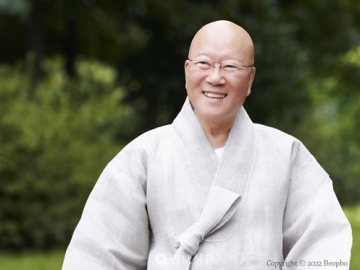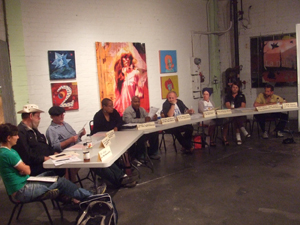History
- 1
- 2
News

In The CD 10 Race, Only One Candidate Has Earned The Right To Lead The District
reprinted from CityWatch LA October 07 2024ELECTION 2024 - When you know the story of how Heather Hutt became the Counc...

Heather Hutt Ignores the Law
CD 10 Heather Hutt’s Office Ignores Legal Requirements for Country Club Gates, Sparking Community OutrageA controversy is brewing ...
Read This Before Voting for Heather Hutt
CD10 OVERVIEW - The lurid tale of politics as usual in…
Mayor Bass Ghosts Her Constituents
Mayor Bass Ghosts Her Constituents.I can’t tell you how excited…
Mark Ridley-Thomas Sentenced to 3 Years 6 Months
The 68-year-old was convicted March 30 for voting in support of…
The Fight Is On To Preserve Neighborhood Council Funds
- Details
- Category: Neighborhood Councils
- Published on Wednesday, 13 April 2011 20:18
- Written by Dianne Lawrence
Reprinted with permission from The Argonaut
Los Angeles City Administrator Miguel Santana recently unveiled a preliminary plan to reduce the city's municipal budget that includes severe cuts to senior centers, cultural and recreational programs, as well as one area that has become a frequent target of City Hall - neighborhood council budgets.
Los Angeles City Administrator Miguel Santana recently unveiled a preliminary plan to reduce the city's municipal budget that includes severe cuts to senior centers, cultural and recreational programs, as well as one area that has become a frequent target of City Hall - neighborhood council budgets. |
Santana recommended a 20 percent reduction in neighborhood council allotments this fiscal year, which would translate into at least a $9,000 loss to the local boards' annual budgets.
City officials are facing a projected $350 million shortfall and are looking at a variety of avenues where they can locate much needed revenue for the city's coffers, and that includes local council budgets.
Neighborhood councils receive $45,000 a year from the city for their operating expenses and to fund various community projects.
Over the last three years, neighborhood councils, which were created via an amendment to the city charter in 1999, have been forced to battle to keep their budgets intact as city officials seek new ways to severely cut into the municipal deficit. This year the councils are planning a new strategy to confront the city's financial crisis.
|
n response to Santana's proposal, Westside neighborhood council presidents gathered at City Councilman Bill Rosendahl's West Los Angeles office March 27 to get a head start on planning their arguments to defend what they believe is the protection of critical community services that would be lost if their budgets are sliced. |
Local People

NEXT! Dianne V. Lawrence on wrapping up the hard copy of The Neighborhood News
For 13 years, Dianne V. Lawrence has helmed The Neighborhood News, highlighting noteworthy community members, holding local politi...

Black Lives Matter CD10 Heroes: LEO BRANTON JR. 1922 - 2013
Originally Printed in Feb 2016 Issue # 46Leo Branton Jr. was a civil rights and entertainment lawyer who championed the underdog a...
Keith Corbin. From the Projects to Head Chef
Keith Corbin is the Head Chef and creator of the remarkable …
Rosie Shuster Saturday Night Live Alumni
In one of my early incarnations, my theatre days in Toronto…
Roy Readmond
While grandparents despair that the younger generation has b…
Community
Global International Scholarships
GlobalScholarships.com is the world’s leading scholarship database for international students. Our database has thousands of ...

Applying to College or Graduate School the Stress-Free Way
Applying for college or graduate school can be a stressful process, but there are some easy steps you can take to reduce that st...
2022 Beauty & Wellness Professionals Scholarship
Scholarship Name: Beauty & Wellness Professionals Schola…
Dog-Fighting, Cock-Fighting & Animal-Cruelty Hotlines
Los Angeles Animal Cruelty Task Force (213) 486-045024-hour …
Teaching Art Online
“How is this going to work?” students and administrators que…
Food N Fun

HAROLD AND BELLE'S MUCH DESERVED RECOGNITION
For more than 50 years, Harold and Belle's has been an icon ...

DESTINATION: PICO- Pico Signal Box Art Project
Pico Signal Box Art Project was conceived by destination:PIC...
Editorial

Herb Wesson for Supervisor?? Why You Might Want to Read this First.
FIRST SOME BACKGROUND ON THE BOARD OF SUPERVISORS: According to Wikipedia, "In 1852, the Legislature created a five-member Bo...
Censorship or Crowd Control at City Council
On Sept.7, 2018 Councilman Herb Wesson, Mitchell England and…
President Wesson: LA's Fabricator-in-Chief
@THEGUSSREPORT Herb Wesson, the current LA City Council pres…
Health
New Community Health Resource Aids Low Income Residents with Alternative Health Options
{jcomments off}Heal One World is a new local health resource formed to help connect people in need - particularly children a...
Free or Low Cost Alternative Health & Wellness Opportunities for Our Community
The Village Health Foundation is one of our long standing re…
Health and Wellness Fair at William Grant Still Arts Center
The Health and Wellness Fair at the William Grant St…
Most Read
Latest Comments
-
DESTINATION: PICO- Pico Signal Box Art Project
-
Thank you for including this art work in your newsletter. We need diversions in these challenging ...
-
-
Hattie McDaniel 2203 S. Harvard
-
Thanks For that clarity!
-
The picture of Miss McDaniel holding the Oscar is Photo-shopped. The Oscar the actors won in that ...
-
-
Remembering Ira Westley and 23rd Street
-
Love you Cousins.
-
-
Reverend James Cleveland King of Gospel Music
-
I attended a service of Rev James Cleveland and that was not the building I went to. It was large and ...
-
Yesterday9
Week61
Month52
All986964
Currently are 17 guests and no members online
Kubik-Rubik Joomla! Extensions























